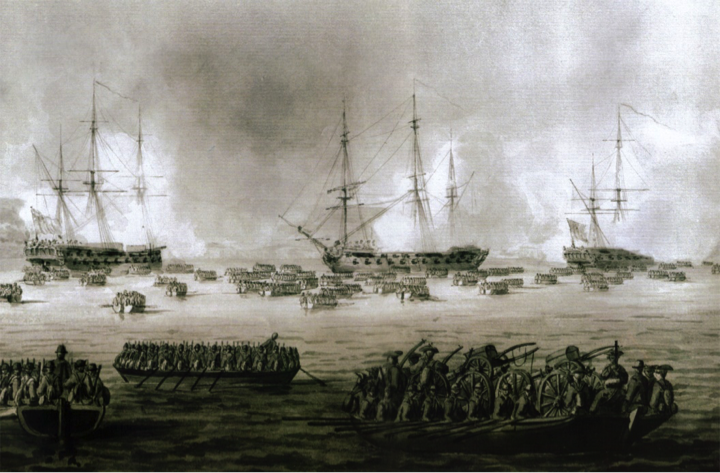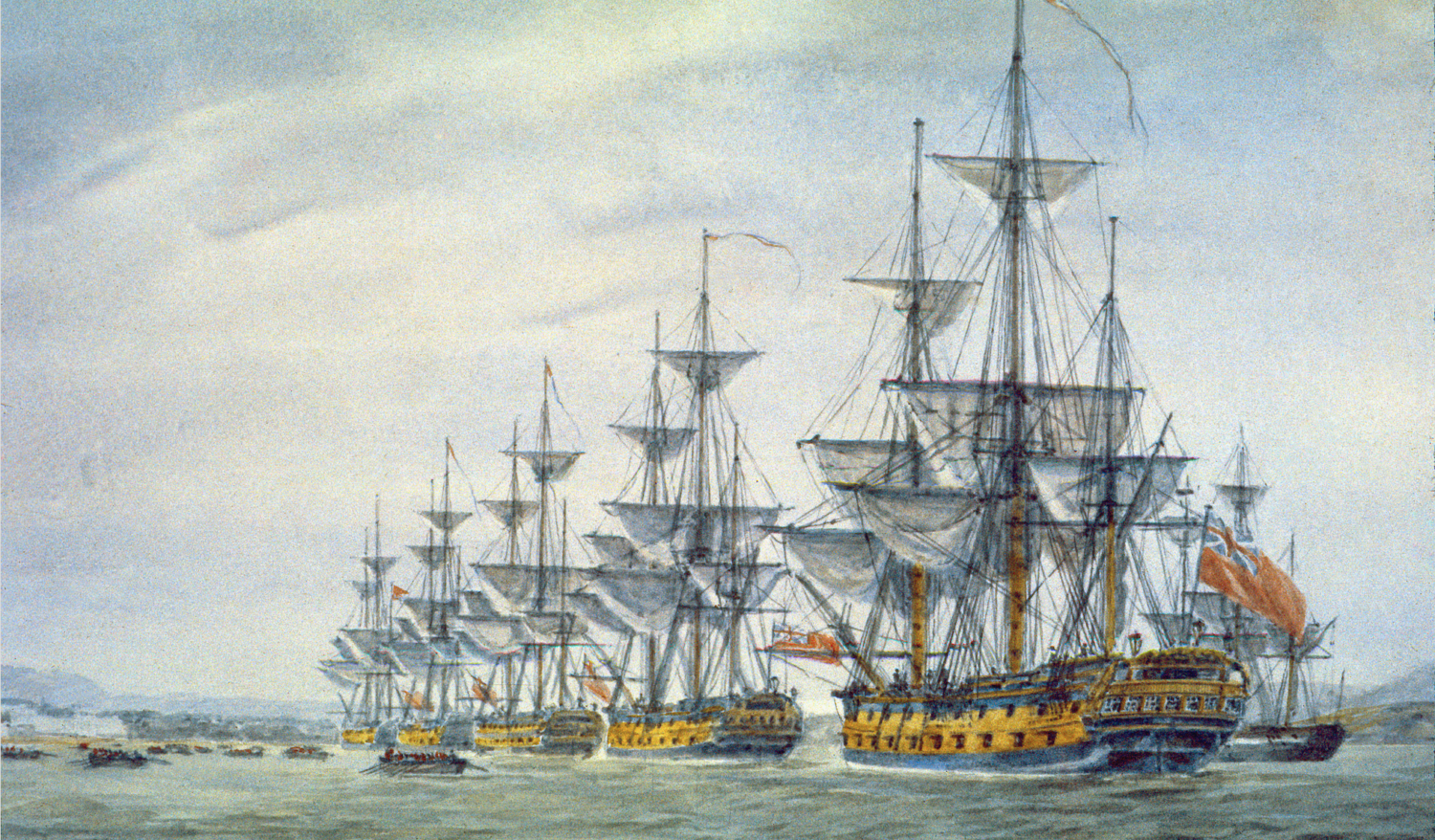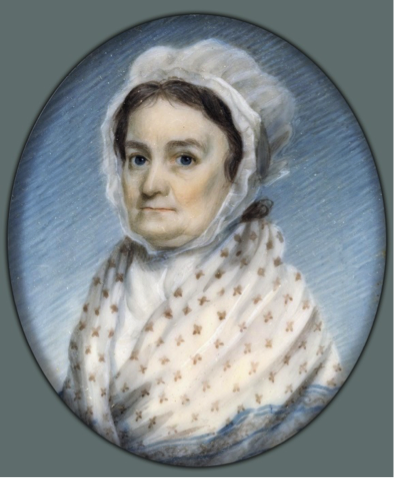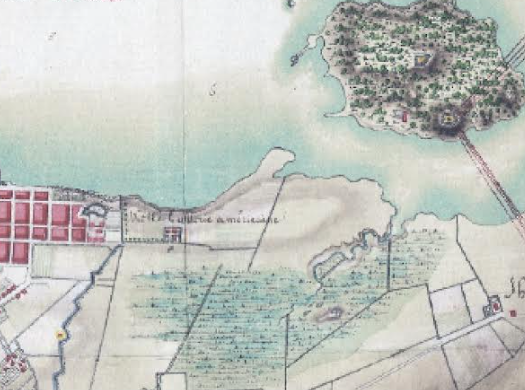Just more than two hundred and forty years ago, British, Hessian and Loyalist forces landed and occupied Aquidneck Island, beginning a nearly three-year occupation with devastating consequences for Newport and the rest of the island and its people.
After abandoning revolutionary and recalcitrant Boston in March 1776, and invading Long Island and Manhattan Island beginning in August 1776, the British decided to seize and occupy Aquidneck Island and Narragansett Bay for several reasons. Both Admiral Richard Howe and his brother General William Howe agreed on the need for a base of operations in New England, so geographically the island and the bay were good solutions. Strategically, with Narragansett Bay as a base, British forces could launch operations to other parts of New England, as well as defend New York City merchant ships from revolutionary privateers operating from Boston and ports to the north. Admiral Howe’s fleet could spend the winter in a protected, deep-water port. Of course, the Royal Navy could at the same time blockade Narragansett Bay and prevent pesky Patriot privateers and commercial vessels from Providence, Bristol, Warren and other port towns sailing out of the bay. Politically, Newport was home of many Loyalists, Americans who remained loyal to the British Crown. Many Loyalist Newport merchants, for example, could be counted on to support British efforts so that the strained economic and social connections could be restored. They hoped that Newport could return to its golden age earlier in the 18th century.
When the British force arrived offshore on December 7, five months after the Declaration of Independence, Newport’s population had plummeted from a prewar high of about 9,000 to 5,000 or lower. Fear of bombardment from Royal Navy warships and British occupation was the main culprit. Later that day the armada dropped anchor west of Weaver’s Cove (near Melville, Portsmouth) and near Dyer’s Island. The force consisted of seven ships of the line (the battleships of the day), four frigates (lighter warships), and seventy transports. Onboard were about 7,000 soldiers and about 1,500 civilians. The military forces consisted of both British soldiers and their German allies called Hessians (named from the Germanic state of Hesse), about equal in number, all commanded by General Henry Clinton. Certainly a good number of Newporters welcomed the arrival and shared the reaction of Hessian officer C. Wende, who recorded in his regimental journal, “One can hardly imagine how majestic the arriving fleet looked.”

For many years this wonderful watercolor (this shows a portion of it) was thought to show British occupation forces coming ashore on Aquidneck Island on December 8, 1776. However, historian Don N. Hagist convincingly concluded that it showed the British landing at Kip’s Bay off Manhattan Island a few months earlier. Robert Cleveley, 1777 (Royal Museums, Greenwich)
The bulk of the troops landed on December 8 and were unopposed by any Patriot resistance. The invading forces immediately spread throughout Aquidneck Island and occupied the high ground and existing entrenchments. Some troops rushed to the north to Bristol Ferry, but only briefly engaged the last Patriot troops departing the island on small boats. A British regiment landed at Newport and moved into the city. Several prominent city officials met the leaders of the force and escorted them to the Colony House where they peacefully gave up authority. The island was now under British military rule. A few days later British troops occupied Jamestown as well.
While many locals with Loyalist leanings may have viewed the British arrival calmly and with thanks, they did not look so favorably upon the Hessians, whose reputation for cruelty and abuse had preceded them. Newporters generally tried to keep their distance from the Hessians; however, many officers took quarters in the houses of residents and not all relations were tense. Samuel Freebody, for example, relied for firewood on a Hessian officer who lodged with him, indicating the “greatest harmony” between them and had “no doubt of his kindness continuing.”
With such a dramatic increase in population, there was a dramatic impact physically and environmentally on Aquidneck Island, aggravated by the three very harsh winters during the occupation. Two days after the landing, Major Frederick MacKenzie recorded in his diary that there was a very hard frost with ice an inch and a half thick. Writing of the cold later in the month, MacKenzie noted that a bottle of water under his bed had frozen as had a bottle of ink inside a desk. The winter of 1778-79 was so cold that several Hessian soldiers froze to death in an unheated guard house. One observer described them as “standing in their sentry boxes frozen to death, each with his musket standing by his side.”
Social tensions rose as the temperatures dropped and wood became scarcer. A British officer recalled during one winter the British commander gave “orders for the Cutting Down of almost every tree on the Island for fuel,” as well as orders for tearing down vacant houses and fences. It is estimated that a total of 200 buildings were torn down throughout the occupation.
Social tension also increased because of limited housing, even though many houses had been vacated by people who had fled rather than face the occupation. In the summer, many troops would disperse throughout the island; however, in the winter most would return to Newport straining its resources. They moved into all public buildings (including the Colony House), taverns, and homes. Except for Trinity Church, all churches became barracks. Some public buildings were even used to house the horses of officers.
Men faced severe constraints on their movements and activities during the occupation. They had to obtain written permission to leave or return to the island, had to register their small boats with the authorities, and had to obtain written permission to fish or hunt fowl. People suspected of having sympathy for the rebel cause were punished. Newporter Fleet Greene recorded in his diary that one military commander “Abuses the Inhabitant Friends to Liberty in a Most shocking Manner. Not suffering them to talk in the street.”
Women could move more freely than men and so were helpful in obtaining needed supplies and news. Many claimed a greater degree of social independence and used their social and sexual leverage on lonely soldiers to their advantage. However, their relative ease of movement came with costs. As their public visibility increased, so did the chance of abuse by soldiers.
Mary Gould Almy was certainly not alone in the challenges she faced. While a committed Loyalist, her husband Benjamin had joined the “rebel” ranks, and she was therefore forced to maintain connections to both sides. “I am for English government,” she wrote in her diary, “and an English fleet.”
During the British occupation, Mary Almy operated a boarding house on Thames Street. (When Newport was later occupied by French forces under General Rochambeau, her house doubled as a meeting place for a Loyalist spy ring.) Benjamin participated in the siege of Newport in August 1778, survived the siege and the war, and returned to operate the boarding house with his wife. When George Washington as president of the new United States visited the city in 1790, he reportedly stayed at the house (it was razed in the 1920s). The Almys were so taken with the visit that they reportedly saved for decades the blanket he used.
Finally, the British occupation force left in October 1779. Fortunately, the departing soldiers did not burn the city; but they did destroy the light house at Beavertail in Jamestown.
[Banner image: British warships are in the Main Channel in Narragansett Bay, having dispatched small boats filled with soldiers ready to land on shore and occupy Newport and the rest of Aquidneck Island. Watercolor by Irvan Bevan (1852-1940) (Mariner’s Museum)]Bibliography:
The author would like to thank Bert Lippincott of the Newport Historical Society and Sue Rousseau of the Portsmouth Free Public Library for their assistance.)
Johnson, Donald F. “Occupied Newport: A Revolutionary City under British Rule.” Newport History. Vol. 84, No. 272. Summer 2015.
McBurney, Christian. The Rhode Island Campaign: The First French and American Operation of the Revolutionary War. Yardley, PA: Westholme, 2011.
McBurney, Christian. Spies in Revolutionary Rhode Island. Charlestown, SC: History Press, 2014.
Schroder, Walter K. The Hessian Occupation Of Newport And Rhode Island,1776-1779. Westminister, MD: Heritage Books, 2005.
Stensrud, Rockwell. Newport, A Lively Experiment, 1639-1969. London: D Giles, 2015.



























